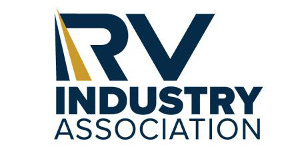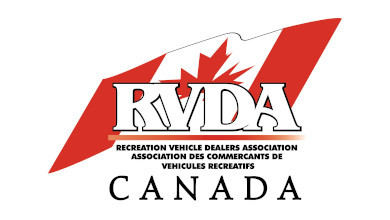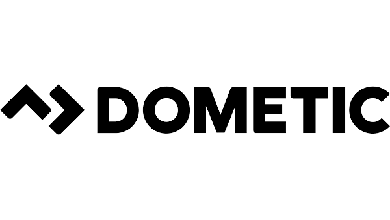Blog: The Makings of a Marketing Strategy Blueprint
 Mills
MillsAs a marketer in the RV industry, you have a lot on your plate. You’re in charge of events and tradeshows, sales enablement, content planning and production, website updates, and managing dealer programs — the list goes on and on. With all of that to consider and take care of, it can be difficult to carve out and protect the time required to analyze and update your marketing strategy on a regular basis. With how fast-paced the marketing industry is, and with the ever-evolving ways to reach your target market, regularly revisiting your marketing strategy allows you to ensure its focus aligns with where your business wants to go.
Creating Your Marketing Strategy
It is important to have marketing efforts directed by both data and creativity. When you work to create your marketing strategy, you therefore need to begin with both of those as inputs. Evaluate what has worked in the past from a creative standpoint, and then verify that effectiveness by consulting your data. From this point, you can begin to get the overview for areas to focus on in the coming year.
A marketing strategy will give valuable direction and consistency to all marketing efforts: both direct efforts such as advertising campaigns, newsletters and direct emails, sales enablement, and social media as well as channel marketing in which you’re assisting your dealers with marketing programs. When you lack an overarching strategy, you end up executing on an ad hoc basis—sure, you get things out the door, but to what end? The marketing strategy is a guide that keeps you on a consistent path. Moving from episodic marketing to strategic marketing helps transform companies, and a marketing strategy is a meaningful first step in the equation.
Additionally, you should build in some buffer to your marketing strategy. This buffer might give you the ability to seize a unique opportunity to partner with a dealer or another brand in the space on a joint campaign, or to respond to an important request for additional materials from your sales team. Think about it like you think about budgeting for your personal finances: if you build a buffer into your spending, a new battery for your car is no big deal. If you’re budgeting right up to your spend level, that becomes a very stressful addition. Plan on encountering the occasional emergency, and be prepared to support those requests.
What Should Be Included?
If you were to analyze the marketing strategies of various companies throughout the RV manufacturing industry, you’d most likely find very different focuses. Some will have robust dealer programs that focus on arming the sales people at the dealer level with incentives and collateral to improve sales. Others will have a more direct-to-consumer approach with consistent content production through blogs, videos, and newsletters. Others will be largely focused on events and generating a pipeline for their sales team to manage from those events.
The point is that your marketing strategy must align with your business objectives. That is the first priority. From there, consider the following components to define your strategy:
- Audience: Before you can create a marketing plan and the assets to execute that plan, you have to define your audience. The people targeted by Airstream, for example, are very different from those looking to buy a Jayco. First and foremost, you need to know each audience you are focused on targeting, and know them well.
- Message: One of the toughest parts of leading the marketing for an RV manufacturer is the sheer number of audiences to consider. After you’ve defined your buyer, you will need to create a core message for each audience. Are you selling to first-time RV buyers? The message that will speak to them is very different from that which will appeal to someone buying their fourth or fifth RV. This second buyer may be an empty nester, have more disposable income, and be looking for more elevated comforts than someone who has multiple kids and is more concerned with sleeping space. Also, remember not to neglect your dealers. They are an audience as well.
- Tactics: From this position, with a defined audience and message for each, you can start working on the tactics needed to address your target market. For example, you may want to use events to connect with your dealers, but the empty nester audience mentioned above is not going to be at an industry B2B trade show, so you’ll need a solid digital presence to speak to that buyer.
As you get through your high-level tactics, you’ll want to consider the following components of your strategy, as well:
- Marketing mix: This includes the so-called four P’s—price, promotion, product, and place. This part of the strategy may be quite lengthy and will include details about what products will be promoted in what places. For example: a new RV model will be promoted at its full asking price for three consecutive months through an email campaign, paid Instagram promotion, and a press release, all following the launch at an annual dealer meeting before ever hitting the public.
- The resources (people and budget) needed to execute marketing efforts: This includes the roles and names of people who will lead efforts and estimated budget for different campaigns.
- Channels for getting messages out (blog, email, social media, etc.): This can be as in-depth as you’d like. Some companies may list out specific blog topics for each quarter, while others may list only broad categories or an ideal number of posts, for example. At Element Three, we plan our content a month in advance, and then work ahead to fill that content. This allows us to be flexible when a unique opportunity arrives, but to also have the forward-looking ability to focus on what projects need to be executed on our schedule.
Prepare for and Expect Change
Your marketing strategy is important – after all, it’s basically the department-level version of your business strategy, the guiding light by which your marketing team should navigate. But it will not be set in stone. Things change, and we all need to be ready to be agile in a world where materials are in short supply, budgets are changing, and the economy is shifting. For example, at Element Three, a primary marketing goal was to secure and conduct multiple speaking engagements in 2020. For obvious reasons, we had to pivot and instead launched a podcast series and hosted webinars on new challenges our customers were facing due to the pandemic.
As you set your quarterly goals for your department, refer back to your marketing strategy. Use it as a tool to help make those goals smart, but also assess the strategy in light of anything that’s changed since the previous quarter. Just as you review your company’s annual plan and strategy throughout the year to ensure you’re still on track, you need to be constantly revisiting your marketing strategy as you set goals for your team.
Whether you’ve never before built out a marketing strategy, you’ve iterated on an existing one for years, or you consider yourself a strategic expert, it’s time to take a fresh look at what you’re working with ahead of 2022. Always be ready to adjust, but don’t go into next year without a plan.
Joe Mills is the Business Development Manager at Element Three, a marketing consultancy that recently released its 2021 Marketing Toolkit.




